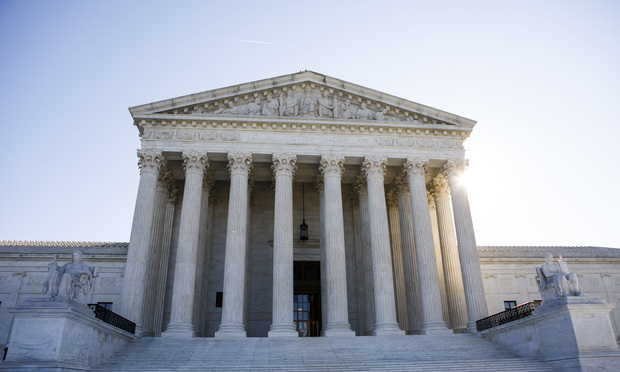How many people have gained coverage as a result of the Affordable Care Act? That depends on who you ask -- and how you ask.
Related: Uninsured rate drops again
In 2010, the Congressional Budget Office projected that by 2016, 32 million people would have gained coverage under the Affordable Care Act. By 2012, this number was revised down to 30 million. By April 2014, the projection had fallen again, to 25 million. By March of this year, Congress's forecasters were guessing 22 million.
But wait: Why would we mess around with projections? We have real numbers! Erm, yes, we have … too many numbers. We have a poll from Gallup, which suggests that the number of uninsured people has fallen from a high of 18 percent in 2013 to 11 percent today, which would give us about 22 million people.
The latest data from the Centers for Disease Control suggests that the number of uninsured has declined roughly 22 million since 2013, and 17.8 million since 2010 (darn you, financial crisis!). And today we got data from the Census Bureau, which suggests that the number of uninsured people has fallen from 13.3 percent to 9.1 percent since 2013, or by about 12.8 million. There are other surveys too. But we hardly need morenumbers.
How can everyone get such different answers? Well, for one thing, methodologies differ. There are basically three ways you can ask people whether they’re uninsured:
-
Are you uninsured right now?
-
Have you been uninsured for all of the last year?
-
Have you been uninsured at any point in the last year?
The third question will produce the highest estimate; the second question the lowest; the first somewhere in between. The Census counts you as uninsured only if you’ve been uninsured all year. The CDC asks some variant of all three (the figure I gave was the answer to the third question). Gallup asks the first question.
Related: Trump health coverage plan would double the uninsured rate
You can make an argument for any of these questions. “Are you uninsured right now” probably yields the most accurate data, because peoples’ memories tend to get fuzzy after a few months, and they may include last year’s jobless spell in this year’s survey, or conversely, when answering in August, they may forget that they were uninsured for most of January.
However, the first question is also going to pick up a lot of people whose lack of insurance isn’t really a big problem. For instance people who are between jobs for a month or two, and statistically are unlikely to have a major medical event during that time, so probably are not much affected either in their health or their finances. And yet if asked only that first question, they will appear in the statistics alongside the long-term uninsured.
“Have you been uninsured for all of the last year?” will tell us about the problem that probably worries us the most: the chronically uninsured, who stand a good chance of facing a medical expense without insurance. On the other hand, it sets a pretty stiff bar for calling someone “uninsured.” Being without insurance for 10 months is almost as bad as being without it for 12, but since the question is binary, those people won’t show up. And as I say, there’s probably some significant measurement error.
Related: Despite availability of insurance, many millennials go without
“Have you been uninsured at all in the last year?” has the overinclusiveness problems of Question Number One, and the accuracy problems of Question Number Two. On the other hand, unless you conduct the survey year-round, it’s probably the question you want to ask, because otherwise, your results can end up skewed by seasonal effects or mid-year changes in the economy.
None of these numbers is the “right” number; all of them have their strengths and weaknesses. And the same could be said for picking a past year with which to compare our current uninsured rate. I chose 2013 because the bulk of the decline occurred after the exchanges opened. But the administration is fond of touting measures, such as temporary high-risk pools, and the ability to keep children under the age of 26 on your health insurance, that may have reduced the number of uninsured far earlier than that. I think the figures the administration uses are way too high, but they’re probably good for at least a small gain in the years between 2010 and 2014.
We could go back a little further, of course. But here we run into yet another problem: the Great Recession, which sent unemployment skyrocketing. Since so many people get insurance through their employers, that probably artificially boosted the number of uninsured, a number that would have naturally fallen somewhat as the economy recovered, even if Obamacare had never passed.
How much would it have fallen? Friend, ask me an easy one.
The point is that what we really want to compare it to is not the 2013 number, but to the 2016 counterfactual: How many people would now be uninsured if Obamacare had not passed?
Someday, scientists may be able to gain access to a parallel universe and answer that question. Alas, we do not have that access right now. And so we are stuck with guesses. Liberals will probably pick a start date, and a methodology, that makes the decline look biggest. Conservatives will probably pick the one that gives the smallest figure.
I’m going to do neither. I think the number of would-be-uninsured people now covered by Obamacare is almost certainly north of 10 million. I’m not sure exactly how far north. And I’m not sure we’ll ever have a better estimate than that, either.
© 2025 ALM Global, LLC, All Rights Reserved. Request academic re-use from www.copyright.com. All other uses, submit a request to [email protected]. For more information visit Asset & Logo Licensing.







